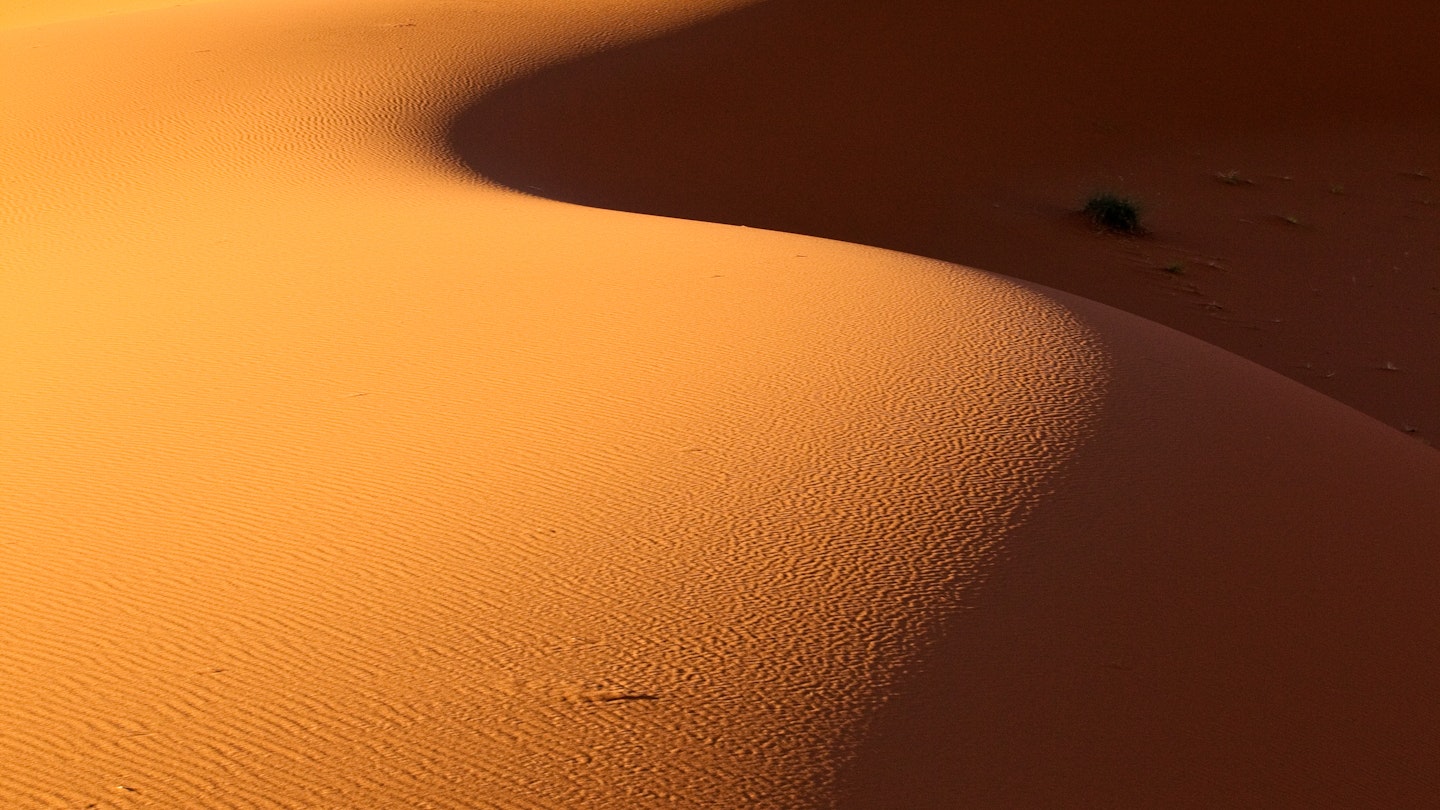Discover Morocco’s Top 10 Natural Wonders
From golden sand dunes to the lofty peaks of the High Atlas mountains, Morocco is an adventurer’s dream. Epic landscapes carpet this slice of North Africa like the richly patterned rugs you’ll lust after in the souqs.
On lower ground, windswept coastlines, waterfalls, and caves are tucked into forested hills and verdant palm oases. Here are Morocco’s top 10 natural wonders.
Erg Chebbi
Shape-shifting over 17 miles from north to south and reaching heights of 525 feet, the great sand sea of Erg Chebbi is extraordinarily scenic. The rose-gold dunes rise dramatically above a pancake-flat, grey hamada (hard-packed rocky desert) and turn stunning shades of orange, pink, and purple as the sun sets.
Plage Sauvage
Two-and-a-half miles south of Mirleft lies this truly wild beach, accessible down a set of steps. Featuring caves, cliffs, and crashing waves, it presents great opportunities for surfing. There’s an outpost at Spot-M for board and wetsuit rental, along with Biscou Surf School. The beach is gorgeous, and the ocean remains relatively mild, whether or not you’re riding a board.
High Atlas Mountains
Welcome to North Africa’s highest mountain range, known by Imazighen (Berbers) as “Idraren Draren” (Mountains of Mountains), and a trekker’s paradise from spring to autumn. This 625-mile range encircles Marrakesh to the south and east, extending from the Atlantic Coast just north of Agadir to Khenifra in the northeast. The saw-toothed peaks serve as a weather barrier between the mild Mediterranean climate to the north and the Sahara to the south.
For rafters and kayakers, the valley is a green jewel where rafts whip between 8.3ft-wide limestone walls. For climbers and trekkers, the extreme topography and vast routes offer breathtaking views and a thrilling sense of wilderness.
Jebel Toubkal
For pure mountain air that cuts through the heat, don’t miss the highest mountain in North Africa: snowcapped Jebel Toubkal (13,671 ft), located in the heart of Toubkal National Park. Mountain trails criss-cross the range, starting from Imlil, at the source of the Mizane River.
Erg Chigaga
There’s not a single sand dune (erg) at the misnamed Erg Chigaga; instead, there is an incredible stretch of golden sand sea, some 35 miles southwest of M’Hamid. It is the largest sand sea in Morocco, snaking along the horizon for 25 miles and bordered by mountain ridges. The classic way to arrive is by camel, taking between five to seven days for a round trip.
Gouffre de Friouato
More than 66ft wide and 755ft deep, the Gouffre de Friouato is said to be the deepest cavern in North Africa, with a possibly extensive cave system. Investigated since 1935, access leads down 520 precarious steps (with handrails) to the floor. Once at the bottom, you can squeeze through a small opening to explore fascinating chambers found 200 more steps below. It’s dark and eerily beautiful.
The most spectacular chambers, adorned with extraordinary formations, are the Salle de Lixus and the Salle de Draperies, resembling thin sheets of curtains, frozen in time. Speleologists have explored to a depth of 984ft, believing there are more rooms another 1,640ft below.
Cascades d’Ouzoud
The Cascades d’Ouzoud are stunningly beautiful, featuring several distinct falls, with the largest exhibiting a massive 328ft drop. This area is among the most popular day trips from Marrakesh, so expect to share this natural idyll with fellow adventurers. During busy summer weekends, the paths lined with cafes buzz with local families and tourists.
Oualidia
Oualidia (wa-lid-ee-ah) features a gorgeous crescent-shaped lagoon with golden sands, shielded from the wild surf by a rocky breakwater. Renowned for its oysters, the town boasts great fish and seafood, making it a popular weekend and summer retreat for locals. Beyond July and August, the area is tranquil, perfect for relaxation, surfing, and enjoying shellfish delicacies. In spring and autumn, birdwatchers flock to observe migrating pink flamingos and other species around the lagoon.
Iriqui National Park
Covering a landmass of 303,940 acres, Morocco’s largest national park, Iriqui, was established in 1994 to preserve the unique biodiversity of this Saharan region characterized by arid savannas, dunes, and salt flats. The ephemeral wetlands of Lake Iriqui attract migratory birds during the winter rainy season. It takes around 55 miles of off-road driving from Foum Zguid, but can be visited as part of a scenic tour to or from Erg Chigaga.
Rif Mountains
The Rif (reef) is the greenest and most northerly of Morocco’s mountain chains, making it an excellent area for exploration, particularly on foot. There are abundant hiking opportunities in the stunning landscapes of this region.




